Vue3
一 ref属性
被用来给元素或子组件注册引用信息(id的替代者)
应用在html标签上获取的是真实DOM元素,应用在组件标签上是组件实例对象(vc)
使用方式:
打标识:
.....
或获取:this.$refs.xxx
<template>
<div>
<h1 v-text="msg" ref="title"></h1>
<button ref="btn" @click="showDOM">点我输出上方的DOM元素</button>
<HelloWorld ref="sch" />
</div>
</template>
<script>
import HelloWorld from "./components/HelloWorld.vue";
export default {
name: "App",
components: { HelloWorld },
data() {
return {
msg: "lqz",
};
},
methods: {
showDOM() {
console.log(this.$refs.title); //真实DOM元素
console.log(this.$refs.btn); //真实DOM元素
console.log(this.$refs.sch); //School组件的实例对象(vc)
},
},
};
</script>
二 props配置项
功能:让组件接收外部传过来的数据
传递数据:
接收数据:
第一种方式(只接收):props:['name']
第二种方式(限制类型):props:{name:String}
第三种方式(限制类型、限制必要性、指定默认值):
props:{
name:{
type:String, //类型
required:true, //必要性
default:'老王' //默认值
}
}
三 mixin(混入)
mixin(混入)
功能:可以把多个组件共用的配置提取成一个混入对象
使用方式:
第一步定义混入:
export const hunhe = {
methods: {
showName() {
alert(this.name);
},
},
mounted() {
console.log("你好啊!");
},
};
export const hunhe2 = {
data() {
return {
x: 100,
y: 200,
};
},
};
第二步:使用混入(全局)
//引入Vue
import Vue from 'vue'
//引入App
import App from './App.vue'
import {hunhe,hunhe2} from './mixin'
//关闭Vue的生产提示
Vue.config.productionTip = false
Vue.mixin(hunhe)
Vue.mixin(hunhe2)
//创建vm
new Vue({
el:'#app',
render: h => h(App)
})
第三步:使用混入(局部)
<template>
<div>
</div>
</template>
<script>
import {hunhe,hunhe2} from '../mixin'
export default {
name: "App",
data() {
return {
name: "lqz",
};
},
mixins:[hunhe,hunhe2]
};
</script>
四 插件
-
功能:用于增强Vue
-
本质:包含install方法的一个对象,install的第一个参数是Vue,第二个以后的参数是插件使用者传递的数据。
-
定义插件:plugins/index.js
import Vue from "vue"; export default { install(a) { console.log('执行了插件', a) // 定义指令 //定义全局指令:跟v-bind一样,获取焦点 Vue.directive("fbind", { //指令与元素成功绑定时(一上来) bind(element, binding) { element.value = binding.value; }, //指令所在元素被插入页面时 inserted(element, binding) { element.focus(); }, //指令所在的模板被重新解析时 update(element, binding) { element.value = binding.value; }, }); //定义混入,所有vc和vm上都有name和lqz Vue.mixin({ data() { return { name: '彭于晏', age: 19, }; }, }); // 原型上放方法,所有vc和vm都可以用hello Vue.prototype.hello = () => { alert("你好啊"); }; } } -
使用插件:main.js中
import plugins from './plugins' Vue.use(plugins, 1, 2, 3); -
App.vue中
<template>
<div>
{{name}}
<input type="text" v-fbind:value="v">
<br>
<button @click="hello">点我</button>
</div>
</template>
<script>
export default {
name: "App",
data() {
return {
v:'xxx'
};
},
};
</script>
五 scoped样式
- 作用:让样式在局部生效,防止冲突。
- 写法:
<style scoped>
六 插槽
- 作用:让父组件可以向子组件指定位置插入html结构,也是一种组件间通信的方式,适用于 父组件 ===> 子组件
- 分类:默认插槽、具名插槽
- 使用方式:
<template v-slot:footer>
<div>html结构2</div>
</template>
七 Elementui的使用
https://element.eleme.cn/#/zh-CN/component/installation
八 vuex的使用
1.概念
在Vue中实现集中式状态(数据)管理的一个Vue插件,对vue应用中多个组件的共享状态进行集中式的管理(读/写),也是一种组件间通信的方式,且适用于任意组件间通信。
2.何时使用?
多个组件需要共享数据时
3.搭建vuex环境
创建文件:src/store/index.js
//引入Vue核心库
import Vue from 'vue'
//引入Vuex
import Vuex from 'vuex'
//应用Vuex插件
Vue.use(Vuex)
//准备actions对象——响应组件中用户的动作
const actions = {}
//准备mutations对象——修改state中的数据
const mutations = {}
//准备state对象——保存具体的数据
const state = {}
//创建并暴露store
export default new Vuex.Store({
actions,
mutations,
state
})
在main.js中创建vm时传入store配置项
......
//引入store
import store from './store'
......
//创建vm
new Vue({
el:'#app',
render: h => h(App),
store
})
4.基本使用
初始化数据、配置actions、配置mutations,操作文件store.js
//引入Vue核心库
import Vue from 'vue'
//引入Vuex
import Vuex from 'vuex'
//引用Vuex
Vue.use(Vuex)
const actions = {
//响应组件中加的动作
jia(context,value){
// console.log('actions中的jia被调用了',miniStore,value)
context.commit('JIA',value)
},
}
const mutations = {
//执行加
JIA(state,value){
// console.log('mutations中的JIA被调用了',state,value)
state.sum += value
}
}
//初始化数据
const state = {
sum:0
}
//创建并暴露store
export default new Vuex.Store({
actions,
mutations,
state,
})
组件中读取vuex中的数据:$store.state.sum
组件中修改vuex中的数据:$store.dispatch('action中的方法名',数据)或 $store.commit('mutations中的方法名',数据)
<template>
<div>
<hr>
{{sum}}
<button @click="handleClick">点我</button>
</div>
</template>
<script>
export default {
name: "App",
data() {
return {
v:'xxx',
sum:this.$store.state.sum
};
},
methods:{
handleClick(){
// action中的方法名
// this.$store.dispatch('jia',2)
// console.log(this.$store.state.sum)
//mutations中的方法名
this.$store.commit('JIA',4)
console.log(this.$store.state.sum)
}
}
};
</script>
备注:若没有网络请求或其他业务逻辑,组件中也可以越过actions,即不写dispatch,直接编写commit
九 Router使用
9.1 说明
- 官方提供的用来实现SPA 的vue 插件
- github: https://github.com/vuejs/vue-router
- 中文文档: http://router.vuejs.org/zh-cn/
- 下载:
npm install vue-router --save
//引入VueRouter
import VueRouter from 'vue-router'
//引入Luyou 组件
import About from '../components/About'
import Home from '../components/Home'
//创建router实例对象,去管理一组一组的路由规则
const router = new VueRouter({
routes:[
{
path:'/about',
component:About
},
{
path:'/home',
component:Home
}
]
})
//暴露router
export default router
9.2 相关API
VueRouter(): 用于创建路由器的构建函数
new VueRouter({
// 多个配置项
})
路由配置
routes: [
{ // 一般路由
path: '/about',
component: About
},
{ // 自动跳转路由
path: '/',
redirect: '/about'
}
]
注册路由
import router from './router'
new Vue({
router
})
使用路由组件标签
<router-link>: 用来生成路由链接
<router-link to="/xxx">Go to XXX</router-link>
<router-view>: 用来显示当前路由组件界面
<router-view></router-view>
9.3 路由嵌套
9.4 向路由组件传递数据
//1 路由配置
children: [
{
path: 'mdetail/:id',
component: MessageDetail
}
]
// 2 <router-link :to="'/home/message/mdetail/'+m.id">{{m.title}}</router-link>
// 3 this.$route.params.id
9.5 相关API
this.$router.push(path): 相当于点击路由链接(可以返回到当前路由界面)
this.$router.replace(path): 用新路由替换当前路由(不可以返回到当前路由界面)
this.$router.back(): 请求(返回)上一个记录路由
this.$router.go(-1): 请求(返回)上一个记录路由
this.$router.go(1): 请求下一个记录路由
9.6 多级路由
routes:[
{
path:'/about',
component:About,
},
{
path:'/home',
component:Home,
children:[ //通过children配置子级路由
{
path:'news', //此处一定不要写:/news
component:News
},
{
path:'message',//此处一定不要写:/message
component:Message
}
]
}
]
// 跳转
<router-link to="/home/news">News</router-link>
9.7 命名路由(可以简化路由的跳转)
{
path:'/demo',
component:Demo,
children:[
{
path:'test',
component:Test,
children:[
{
name:'hello' //给路由命名
path:'welcome',
component:Hello,
}
]
}
]
}
<!--简化前,需要写完整的路径 -->
<router-link to="/demo/test/welcome">跳转</router-link>
<!--简化后,直接通过名字跳转 -->
<router-link :to="{name:'hello'}">跳转</router-link>
<!--简化写法配合传递参数 -->
<router-link
:to="{
name:'hello',
query:{
id:666,
title:'你好'
}
}"
>跳转</router-link>
9.8 router-link的replace属性
作用:控制路由跳转时操作浏览器历史记录的模式
浏览器的历史记录有两种写入方式:分别为push和replace,push是追加历史记录,replace是替换当前记录。路由跳转时候默认为push
如何开启replace模式:News
9.10 编程式路由导航
//$router的两个API
this.$router.push({
name:'xiangqing',
params:{
id:xxx,
title:xxx
}
})
this.$router.replace({
name:'xiangqing',
params:{
id:xxx,
title:xxx
}
})
this.$router.forward() //前进
this.$router.back() //后退
this.$router.go() //可前进也可后退
9.11 路由守卫
- 作用:对路由进行权限控制
- 分类:全局守卫、独享守卫、组件内守卫
全局守卫
// 该文件专门用于创建整个应用的路由器
import VueRouter from 'vue-router'
//引入组件
import About from '../pages/About'
import Home from '../pages/Home'
import News from '../pages/News'
import Message from '../pages/Message'
import Detail from '../pages/Detail'
//创建并暴露一个路由器
const router = new VueRouter({
routes:[
{
name:'guanyu',
path:'/about',
component:About,
meta:{title:'关于'}
},
{
name:'zhuye',
path:'/home',
component:Home,
meta:{title:'主页'},
children:[
{
name:'xinwen',
path:'news',
component:News,
meta:{isAuth:true,title:'新闻'}
},
{
name:'xiaoxi',
path:'message',
component:Message,
meta:{isAuth:true,title:'消息'},
children:[
{
name:'xiangqing',
path:'detail',
component:Detail,
meta:{isAuth:true,title:'详情'},
//props的第一种写法,值为对象,该对象中的所有key-value都会以props的形式传给Detail组件。
// props:{a:1,b:'hello'}
//props的第二种写法,值为布尔值,若布尔值为真,就会把该路由组件收到的所有params参数,以props的形式传给Detail组件。
// props:true
//props的第三种写法,值为函数
props($route){
return {
id:$route.query.id,
title:$route.query.title,
a:1,
b:'hello'
}
}
}
]
}
]
}
]
})
//全局前置路由守卫————初始化的时候被调用、每次路由切换之前被调用
router.beforeEach((to,from,next)=>{
console.log('前置路由守卫',to,from)
if(to.meta.isAuth){ //判断是否需要鉴权
if(localStorage.getItem('name')==='lqz'){
next()
}else{
alert('名不对,无权限查看!')
}
}else{
next()
}
})
//全局后置路由守卫————初始化的时候被调用、每次路由切换之后被调用
router.afterEach((to,from)=>{
console.log('后置路由守卫',to,from)
document.title = to.meta.title || 'lqz系统'
})
export default router
独享守卫
// 该文件专门用于创建整个应用的路由器
import VueRouter from 'vue-router'
//引入组件
import About from '../pages/About'
import Home from '../pages/Home'
import News from '../pages/News'
import Message from '../pages/Message'
import Detail from '../pages/Detail'
//创建并暴露一个路由器
const router = new VueRouter({
routes:[
{
name:'guanyu',
path:'/about',
component:About,
meta:{title:'关于'}
},
{
name:'zhuye',
path:'/home',
component:Home,
meta:{title:'主页'},
children:[
{
name:'xinwen',
path:'news',
component:News,
meta:{isAuth:true,title:'新闻'},
beforeEnter: (to, from, next) => {
console.log('独享路由守卫',to,from)
if(to.meta.isAuth){ //判断是否需要鉴权
if(localStorage.getItem('name')==='lqz'){
next()
}else{
alert('名不对,无权限查看!')
}
}else{
next()
}
}
},
{
name:'xiaoxi',
path:'message',
component:Message,
meta:{isAuth:true,title:'消息'},
children:[
{
name:'xiangqing',
path:'detail',
component:Detail,
meta:{isAuth:true,title:'详情'},
}
]
}
]
}
]
})
export default router
组件内守卫
//进入守卫:通过路由规则,进入该组件时被调用
beforeRouteEnter (to, from, next) {
},
//离开守卫:通过路由规则,离开该组件时被调用
beforeRouteLeave (to, from, next) {
}
//通过路由规则,进入该组件时被调用
beforeRouteEnter (to, from, next) {
console.log('About--beforeRouteEnter',to,from)
if(to.meta.isAuth){ //判断是否需要鉴权
if(localStorage.getItem('school')==='atguigu'){
next()
}else{
alert('学校名不对,无权限查看!')
}
}else{
next()
}
},
//通过路由规则,离开该组件时被调用
beforeRouteLeave (to, from, next) {
console.log('About--beforeRouteLeave',to,from)
next()
}
9.12 路由器的两种工作模式
1 对于一个url来说,什么是hash值?—— #及其后面的内容就是hash值。
2 hash值不会包含在 HTTP 请求中,即:hash值不会带给服务器。
3 hash模式:
地址中永远带着#号,不美观 。
若以后将地址通过第三方手机app分享,若app校验严格,则地址会被标记为不合法。
兼容性较好。
4 history模式:
地址干净,美观 。
兼容性和hash模式相比略差。
应用部署上线时需要后端人员支持,解决刷新页面服务端404的问题
10 localStorage和sessionStorage
//存:
var obj = {"name":"xiaoming","age":"16"}
localStorage.setItem("userInfo",JSON.stringify(obj));
//取:
var user = JSON.parse(localStorage.getItem("userInfo"))
//删除:
localStorage.remove("userInfo);
//清空:
localStorage.clear();
一 Vue3的变化
1.性能的提升
-
打包大小减少41%
-
初次渲染快55%, 更新渲染快133%
-
内存减少54%
2.源码的升级
-
使用Proxy代替defineProperty实现响应式
-
重写虚拟DOM的实现和Tree-Shaking
3.拥抱TypeScript
- Vue3可以更好的支持TypeScript
4.新的特性
-
Composition API(组合API)
- setup配置
- ref与reactive
- watch与watchEffect
- provide与inject
-
新的内置组件
- Fragment
- Teleport
- Suspense
-
其他改变
- 新的生命周期钩子
- data 选项应始终被声明为一个函数
- 移除keyCode支持作为 v-on 的修饰符
5 组合式API和配置项API
5.1 Options API 存在的问题
使用传统OptionsAPI中,新增或者修改一个需求,就需要分别在data,methods,computed里修改 。
5.2 Composition API 的优势
我们可以更加优雅的组织我们的代码,函数。让相关功能的代码更加有序的组织在一起。
6 项目分析
分析文件目录
main.js
Vue2项目的main.js
import Vue from 'vue'
import App from './App.vue'
Vue.config.productionTip = false
new Vue({
render: h => h(App),
}).$mount('#app')
看看vm是什么
const vm = new Vue({
render: h => h(App),
})
console.log(vm)
vm.$mount('#app')
我们再来看看Vue3项目中的main.js
import { createApp } from 'vue'
import App from './App.vue'
createApp(App).mount('#app')
我们来分析一下吧
// 引入的不再是Vue构造函数了,引入的是一个名为createApp的工厂函数
import { createApp } from 'vue'
import App from './App.vue'
// 创建应用实例对象——app(类似于之前Vue2中的vm,但app比vm更“轻”)
const app = createApp(App)
console.log(app)
// 挂载
app.mount('#app')
这里的app到底是啥,我们输出到控制台看看
App.vue
我们再来看看组件
在template标签里可以没有根标签了
<template>
<!-- Vue3组件中的模板结构可以没有根标签 -->
<img alt="Vue logo" src="./assets/logo.png">
<HelloWorld msg="Welcome to Your Vue.js App"/>
</template>
二 创建Vue3.0工程
1.使用 vue-cli 创建
官方文档:https://cli.vuejs.org/zh/guide/creating-a-project.html#vue-create
## 查看@vue/cli版本,确保@vue/cli版本在4.5.0以上
vue --version
## 安装或者升级你的@vue/cli
npm install -g @vue/cli
## 创建
vue create vue_test
## 启动
cd vue_test
npm run serve
2.使用 vite 创建
官方文档:https://v3.cn.vuejs.org/guide/installation.html#vite
vite官网:https://vitejs.cn
介绍:https://cn.vitejs.dev/guide/why.html#the-problems
- 什么是vite?—— 新一代前端构建工具。
- 优势如下:
- 开发环境中,无需打包操作,可快速的冷启动。
- 轻量快速的热重载(HMR)。
- 真正的按需编译,不再等待整个应用编译完成。
- 传统构建 与 vite构建对比图

## 创建工程
npm init vite-app <project-name>
## 进入工程目录
cd <project-name>
## 安装依赖
npm install
## 运行
npm run dev
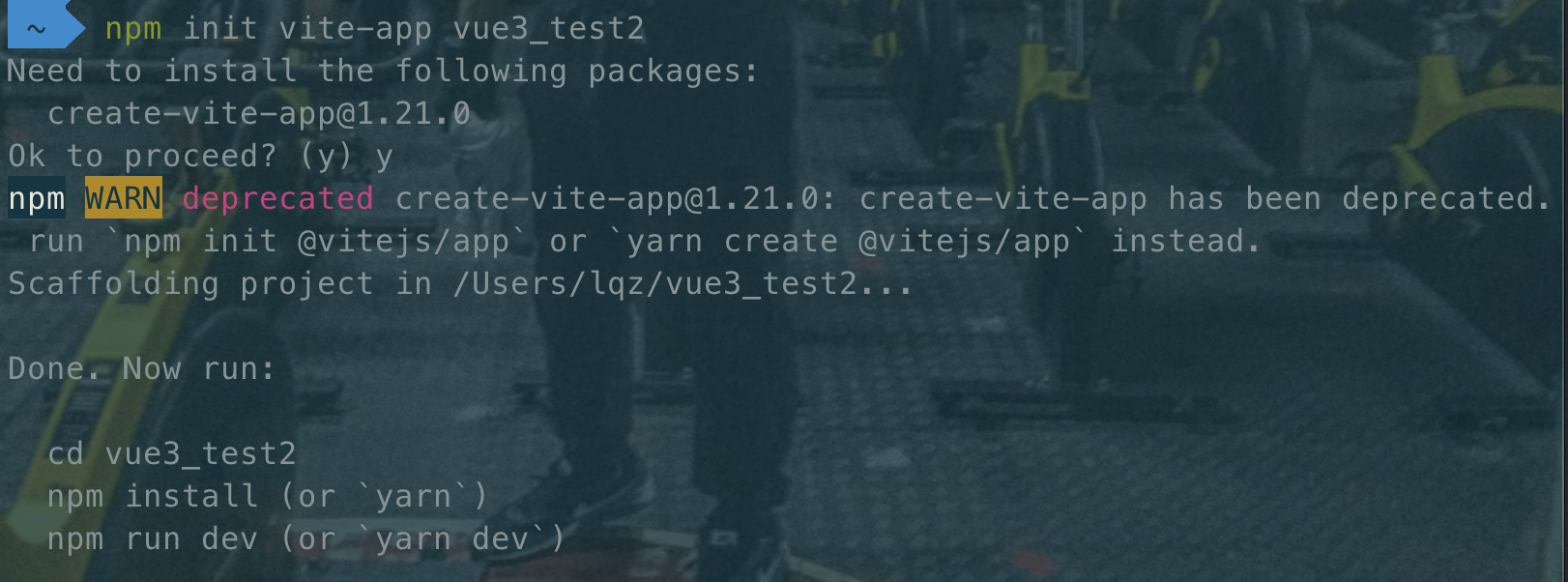
# 确保你安装了最新版本的 Node.js,然后在命令行中运行以下命令 (不要带上 > 符号):
> npm init vue@latest
# 这一指令将会安装并执行 create-vue,它是 Vue 官方的项目脚手架工具。你将会看到一些诸如 TypeScript 和测试支持之类的可选功能提示:
✔ Project name: … <your-project-name>
✔ Add TypeScript? … No / Yes
✔ Add JSX Support? … No / Yes
✔ Add Vue Router for Single Page Application development? … No / Yes
✔ Add Pinia for state management? … No / Yes
✔ Add Vitest for Unit testing? … No / Yes
✔ Add Cypress for both Unit and End-to-End testing? … No / Yes
✔ Add ESLint for code quality? … No / Yes
✔ Add Prettier for code formatting? … No / Yes
Scaffolding project in ./<your-project-name>...
Done.
# 如果不确定是否要开启某个功能,你可以直接按下回车键选择 No。在项目被创建后,通过以下步骤安装依赖并启动开发服务器:
> cd <your-project-name>
> npm install
> npm run dev
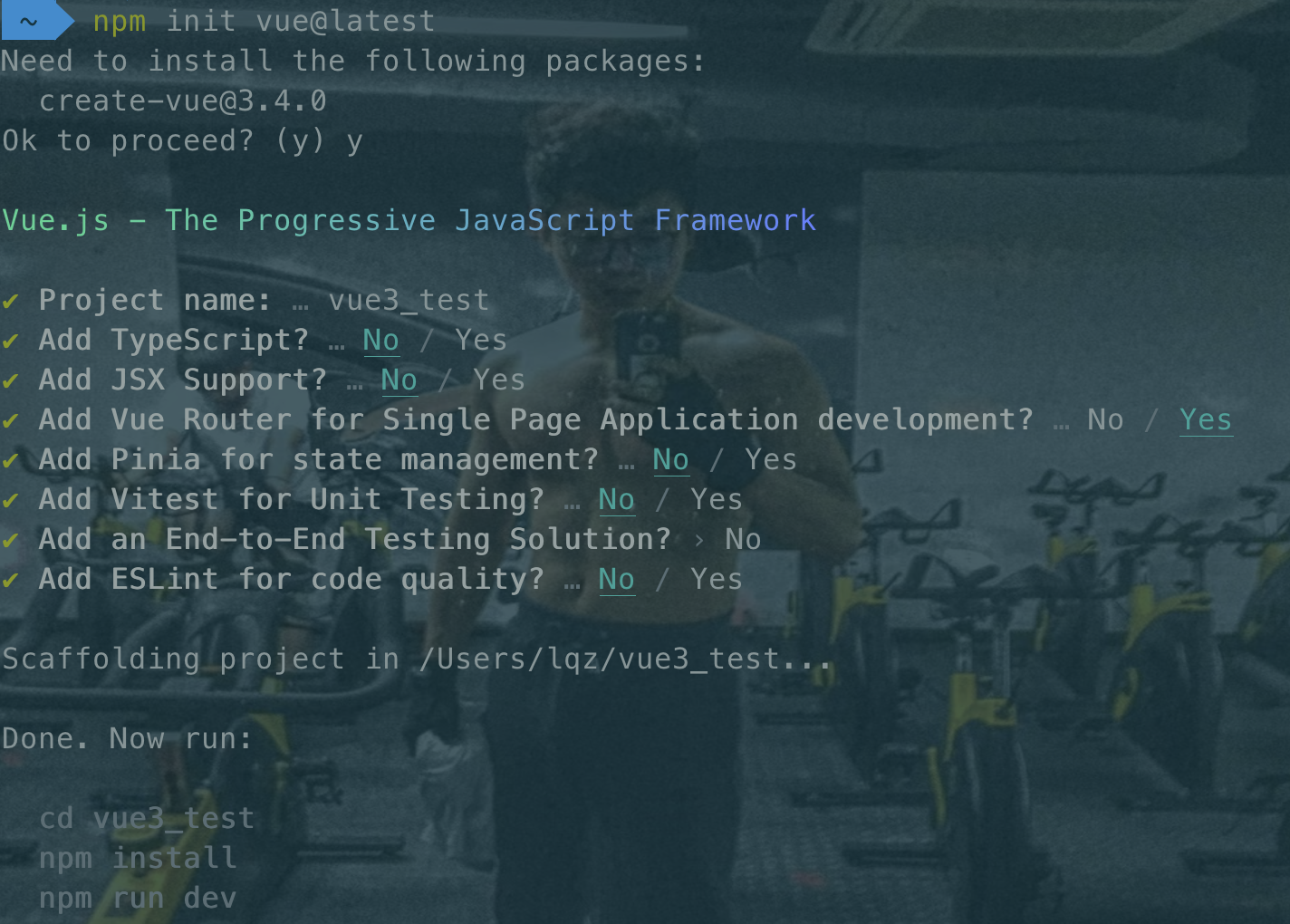
三
三、常用API
3.1 setup
-
setup为Vue3.0中一个新的配置项,值为一个函数
-
setup是所有Composition API(组合API)编写的位置
-
组件中所用到的:数据、方法等等,均要配置在setup中
-
setup函数的返回值:返回一个对象,对象中的属性、方法, 在模板中均可以直接使用
-
注意:
尽量不要与Vue2.x配置混用
- Vue2.x配置(data、methos、computed...)中可以访问到setup中的属性、方法。
- 但在setup中不能访问到Vue2.x配置(data、methos、computed...)。
- 如果有重名, setup优先。
<template>
{{name}}--{{age}}--{{xx}}
</template>
<script>
export default {
name: 'App',
data(){
return {
xx:this.name
}
},
setup(){
let name='lqz'
let age =19
return {
name,age
}
},
}
</script>
3.2 ref函数
- 作用: 定义一个响应式的数据
- 语法:
const xxx = ref(initValue)- 创建一个包含响应式数据的引用对象(reference对象,简称ref对象)。
- JS中操作数据:
xxx.value - 模板中读取数据: 不需要.value,直接:
<div>{{xxx}}</div>
- 备注:
- 接收的数据可以是:基本类型、也可以是对象类型。
- 基本类型的数据:响应式依然是靠
Object.defineProperty()的get与set完成的 - 对象类型的数据:内部 求助 了Vue3.0中的一个新函数——
reactive函数
3.3 reactive函数
- 作用: 定义一个对象类型的响应式数据(基本类型不要用它,要用
ref函数) - 语法:
const 代理对象= reactive(源对象)接收一个对象(或数组),返回一个代理对象(Proxy的实例对象,简称proxy对象) - reactive定义的响应式数据是“深层次的”
- 内部基于 ES6 的 Proxy 实现,通过代理对象操作源对象内部数据进行操作
<template>
{{ name }}--{{ age }}--{{ xx }}
<br>
{{person}}
<button @click="handleClick">点我</button>
<br>
</template>
<script>
import {ref, reactive} from 'vue'
export default {
name: 'App',
data() {
return {
xx: this.name
}
},
setup() {
let name = 'lqz'
let age = ref(19)
// const person = ref({ // 内部包装成reactive
const person = reactive({
name: '彭于晏',
age: 88
})
function handleClick() {
// console.log(age)
// age.value++
console.log(person)
person.age++
}
return {
name, age, handleClick,person
}
},
}
</script>
3.4 reactive对比ref
- 从定义数据角度对比:
- ref用来定义:基本类型数据
- reactive用来定义:对象(或数组)类型数据
- 备注:ref也可以用来定义对象(或数组)类型数据, 它内部会自动通过
reactive转为代理对象
- 从原理角度对比:
- ref通过
Object.defineProperty()的get与set来实现响应式(数据劫持)。 - reactive通过使用Proxy来实现响应式(数据劫持), 并通过Reflect操作源对象内部的数据。
- ref通过
- 从使用角度对比:
- ref定义的数据:操作数据需要
.value,读取数据时模板中直接读取不需要.value。 - reactive定义的数据:操作数据与读取数据:均不需要
.value。
- ref定义的数据:操作数据需要
3.5 setup的两个注意点
-
setup执行的时机
- 在beforeCreate之前执行一次,this是undefined。
-
setup的参数
- props:值为对象,包含:组件外部传递过来,且组件内部声明接收了的属性。
- context:上下文对象
- attrs: 值为对象,包含:组件外部传递过来,但没有在props配置中声明的属性, 相当于
this.$attrs。 - slots: 收到的插槽内容, 相当于
this.$slots。 - emit: 分发自定义事件的函数, 相当于
this.$emit。
- attrs: 值为对象,包含:组件外部传递过来,但没有在props配置中声明的属性, 相当于
3.6 计算属性与监视
1.computed函数
-
与Vue2.x中computed配置功能一致
-
写法
<template> <p>姓:<input type="text" v-model="person.firstName"></p> <p>名:<input type="text" v-model="person.lastName"></p> <p>全名:{{ person.fullName }}</p> <p>全名修改:<input type="text" v-model="person.fullName"></p> </template> <script> import {ref, reactive} from 'vue' import {computed} from 'vue' export default { name: 'App', setup() { const person = reactive({ firstName: '刘', lastName: '清政' }) // let fullName = computed(() => { // return person.firstName + '-' + person.lastName // }) // 或者,传入箭头函数 // person.fullName=computed(() => { // return person.firstName + '-' + person.lastName // }) // 修改,传入配置项目 person.fullName = computed({ get() { return person.firstName + '-' + person.lastName }, set(value) { const nameArr = value.split('-') person.firstName = nameArr[0] person.lastName = nameArr[1] } }) return {person} }, } </script>
2.watch函数
-
与Vue2.x中watch配置功能一致
-
两个小“坑”:
- 监视reactive定义的响应式数据时:oldValue无法正确获取、强制开启了深度监视(deep配置失效)。
- 监视reactive定义的响应式数据中某个属性时:deep配置有效。
<template> <h2>年龄是:{{ age }}</h2> <button @click="age++">点我年龄增加</button> <hr> <h2>姓名是:{{ person.name }}</h2> <button @click="person.name+='?'">点我姓名变化</button> <hr> <h2>sum是:{{ sum }},msg是:{{ msg }}</h2> <button @click="sum++">点我sum变化</button> | <button @click="msg+='?'">点我msg变化</button> </template> <script> import {ref, reactive} from 'vue' import {watch} from 'vue' export default { name: 'App', setup() { const age = ref(19) const person = reactive({ name: 'lqz', age: 20 }) //1 监听普通 watch(age, (newValue, oldValue) => { console.log('sum变化了', newValue, oldValue) }) // 2 监听对象 watch(() => person.name, (newValue, oldValue) => { console.log('person.name变化了', newValue, oldValue) }) // 3 监听多个 const sum = ref(100) const msg = ref('很好') watch([sum, msg], (newValue, oldValue) => { console.log('sum或msg变化了', newValue, oldValue) }) return {person, age, sum, msg} }, } </script>
3.watchEffect函数
-
watch的套路是:既要指明监视的属性,也要指明监视的回调。
-
watchEffect的套路是:不用指明监视哪个属性,监视的回调中用到哪个属性,那就监视哪个属性。
-
watchEffect有点像computed:
- 但computed注重的计算出来的值(回调函数的返回值),所以必须要写返回值。
- 而watchEffect更注重的是过程(回调函数的函数体),所以不用写返回值。
//watchEffect所指定的回调中用到的数据只要发生变化,则直接重新执行回调。 watchEffect(() => { const x1 = sum.value const x2 = person.age console.log('watchEffect配置的回调执行了') })
3.7 生命周期
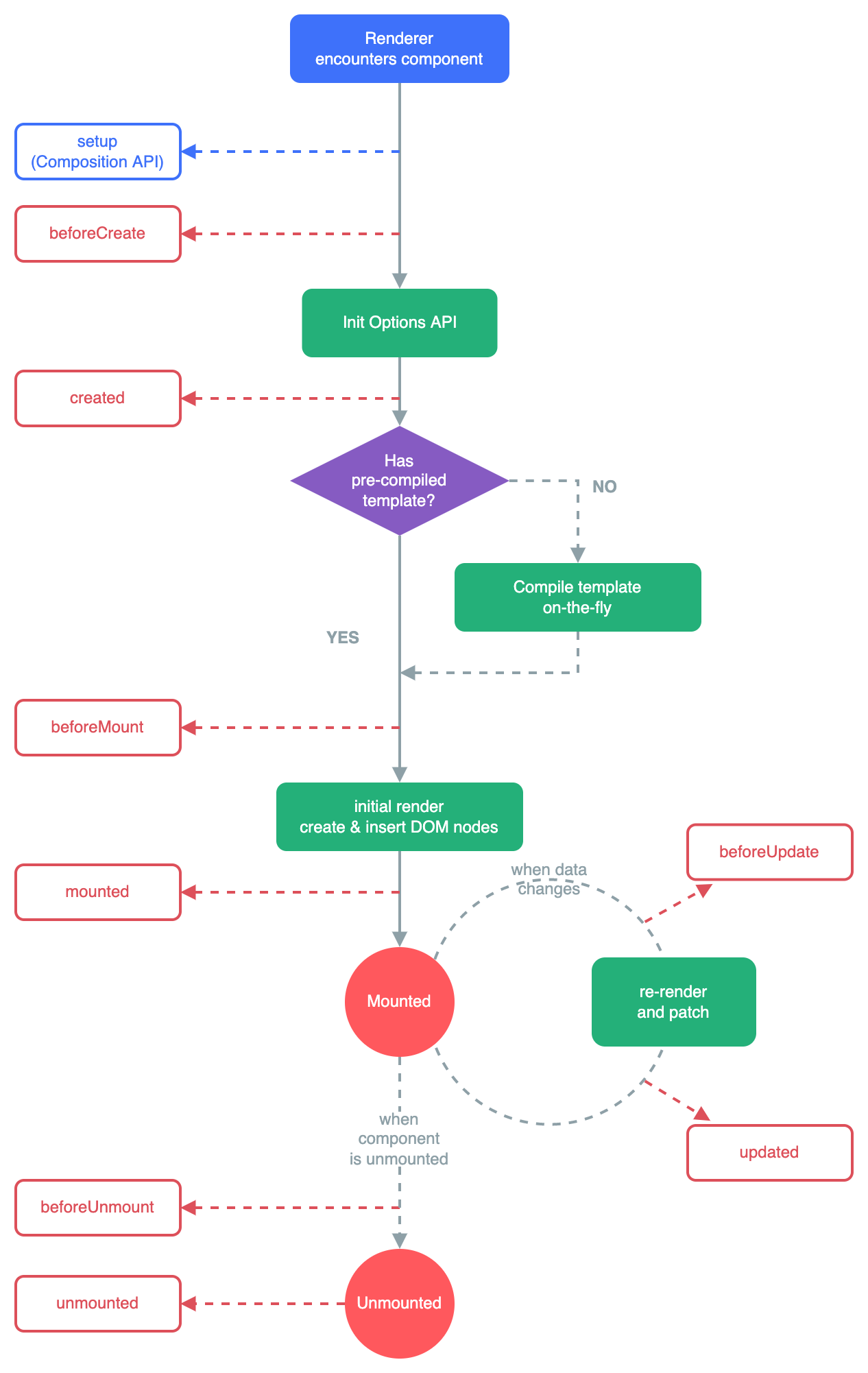
- Vue3.0中可以继续使用Vue2.x中的生命周期钩子,但有有两个被更名:
beforeDestroy改名为beforeUnmountdestroyed改名为unmounted
- Vue3.0也提供了 Composition API 形式的生命周期钩子,与Vue2.x中钩子对应关系如下:
beforeCreate===>setup()created=======>setup()beforeMount===>onBeforeMountmounted=======>onMountedbeforeUpdate===>onBeforeUpdateupdated=======>onUpdatedbeforeUnmount==>onBeforeUnmountunmounted=====>onUnmounted
3.8 自定义hook函数
-
什么是hook?—— 本质是一个函数,把setup函数中使用的Composition API进行了封装。
-
类似于vue2.x中的mixin。
-
自定义hook的优势: 复用代码, 让setup中的逻辑更清楚易懂。
3.8.1 打点功能
<template>
<h2>点击的x坐标:{{ point.x }},y坐标:{{ point.y }}</h2>
</template>
<script>
import {reactive} from 'vue'
import {onMounted, onBeforeUnmount} from 'vue'
export default {
name: 'Point',
setup() {
const point = reactive({
x: 0,
y: 0
})
function getPoint(event) {
console.log(event.pageX)
console.log(event.pageY)
point.x = event.pageX
point.y = event.pageY
}
// 挂在完成开始执行
onMounted(() => {
window.addEventListener('click', getPoint)
})
// 接除挂载时执行
onBeforeUnmount(() => {
console.log('sss')
window.removeEventListener('click', getPoint)
})
return {point}
},
}
</script>
<template>
<div>
<button @click="isShow=!isShow">点我显示隐藏</button>
<Point v-if="isShow"></Point>
</div>
</template>
<script>
import {ref, reactive} from 'vue'
import Point from "./components/Point.vue";
import Demo from './components/HelloWorld.vue'
export default {
name: 'App',
components: {Demo, Point},
setup() {
const isShow = ref(true)
return {isShow}
},
}
</script>
3.8.2 使用hook实现打点
uesPoint.js
import {onBeforeUnmount, onMounted, reactive} from "vue";
export default function () {
let point = reactive({
x: 0,
y: 0
})
function getPoint(event) {
console.log(event.pageX)
console.log(event.pageY)
point.x = event.pageX
point.y = event.pageY
}
// 挂在完成开始执行
onMounted(() => {
window.addEventListener('click', getPoint)
})
// 接除挂载时执行
onBeforeUnmount(() => {
console.log('sss')
window.removeEventListener('click', getPoint)
})
return point
}
Point.vue
<template>
<h2>点击的x坐标:{{ point.x }},y坐标:{{ point.y }}</h2>
</template>
<script>
import usePoint from '../hooks/usePoint.js'
export default {
name: 'Point',
setup() {
let point = usePoint()
console.log(point)
return {point}
},
}
</script>
10.toRef
-
作用:创建一个 ref 对象,其value值指向另一个对象中的某个属性。
-
语法:
const name = toRef(person,'name') -
应用: 要将响应式对象中的某个属性单独提供给外部使用时。
-
扩展:
toRefs与toRef功能一致,但可以批量创建多个 ref 对象,语法:toRefs(person)
<template>
<div>
<h2>姓名:{{ name }}</h2>
<h2>年龄:{{ age }}</h2>
<button @click="age++">改年龄</button>| <button @click="name+='~'">改姓名</button>
</div>
</template>
<script>
import {ref, reactive,toRefs} from 'vue'
export default {
name: 'App',
setup() {
const person = reactive({
name: 'lqz',
age: 19
})
return {
...toRefs(person)
}
},
}
</script>
//对象展开语法
let obj1 = {foo: 'bar', x: 42};
let obj2 = {foo: 'baz', y: 13};
let mergedObj = {...obj1, ...obj2};
console.log(mergedObj)

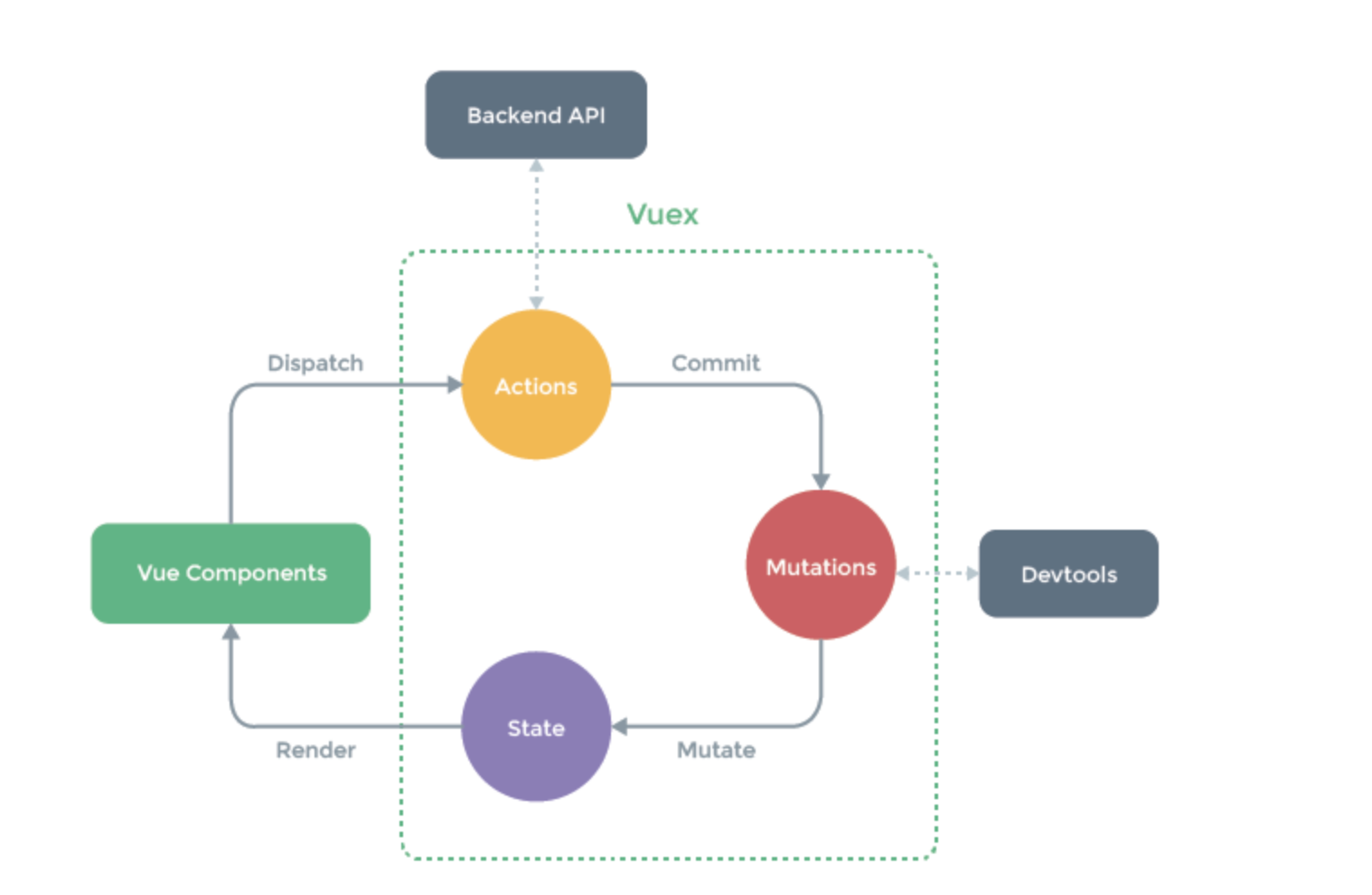
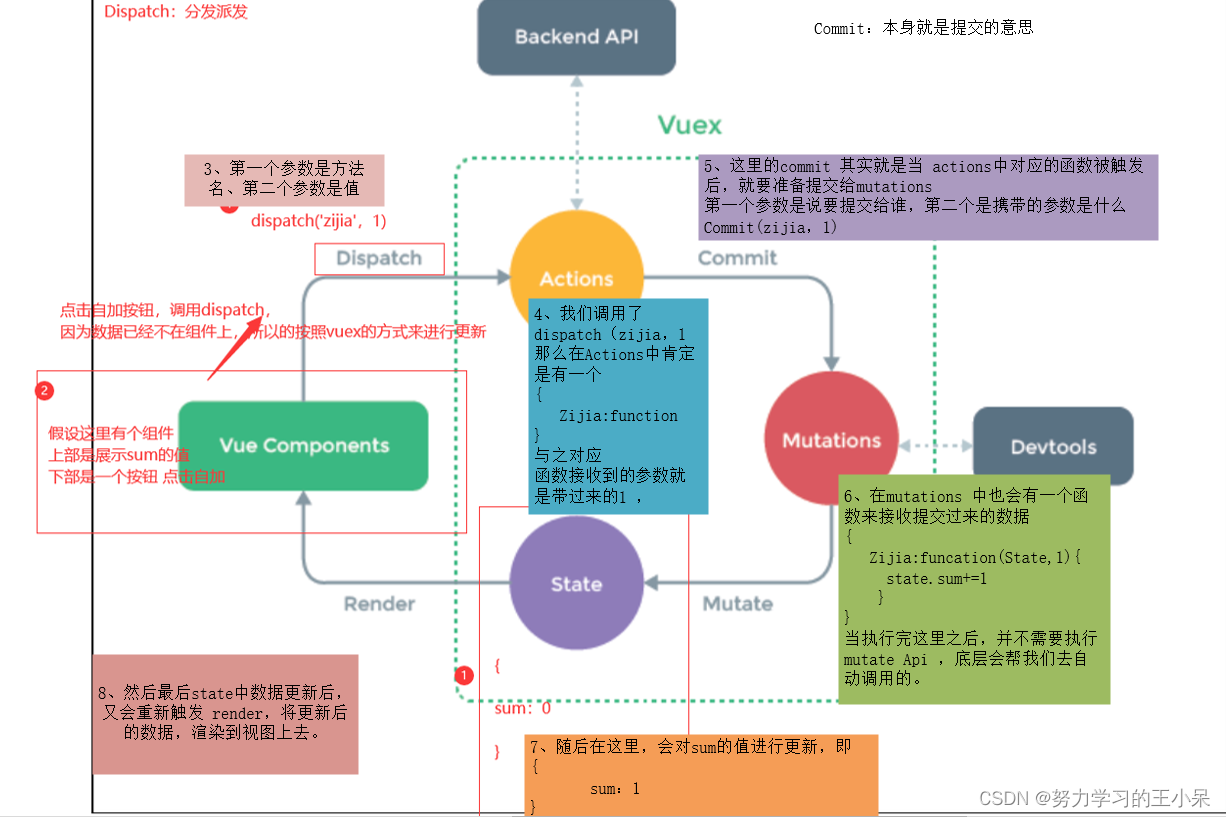


【推荐】国内首个AI IDE,深度理解中文开发场景,立即下载体验Trae
【推荐】编程新体验,更懂你的AI,立即体验豆包MarsCode编程助手
【推荐】抖音旗下AI助手豆包,你的智能百科全书,全免费不限次数
【推荐】轻量又高性能的 SSH 工具 IShell:AI 加持,快人一步
· TypeScript + Deepseek 打造卜卦网站:技术与玄学的结合
· 阿里巴巴 QwQ-32B真的超越了 DeepSeek R-1吗?
· 【译】Visual Studio 中新的强大生产力特性
· 10年+ .NET Coder 心语 ── 封装的思维:从隐藏、稳定开始理解其本质意义
· 【设计模式】告别冗长if-else语句:使用策略模式优化代码结构